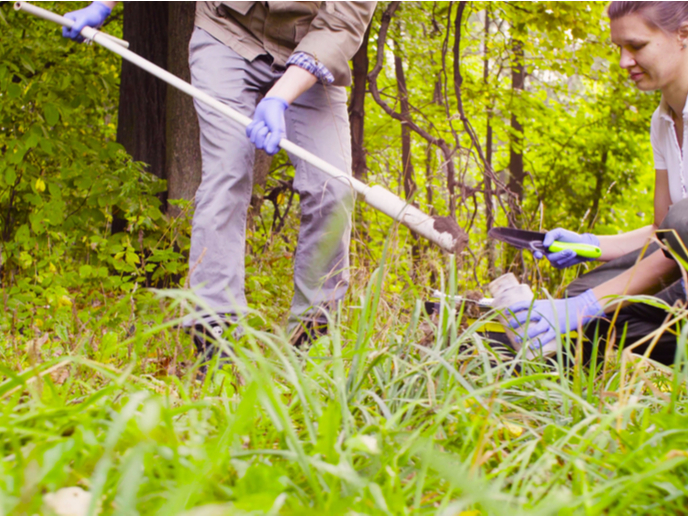Sharing expertise to increase soil carbon sequestration and healthy soil practices
Soils form the largest terrestrial carbon pool: estimated at 2 300 gigatons(opens in new window), two to three times more than atmospheric carbon. Healthy soils store large quantities of carbon as soil organic carbon (SOC). This has tremendous potential in the fight against man-made climate change, as stabilisation mechanisms in organic matter stores carbon over decades to millennia. Whilst there is considerable interest in the benefits of soil carbon, adoption of soil-enhancing agricultural practices remains slow. Working with farmers around the world, the EU-supported CIRCASA (Coordination of International Research Cooperation on soil CArbon Sequestration in Agriculture) project found that socio-economic factors were the main impediment. Concerns included: additional costs (with little support for access to technology), a lack of soil carbon monitoring options and insufficient overall best practice knowledge. “Although barriers vary with national circumstances, views were similar,” explains project coordinator Jean-François Soussana from the National Research Institute for Agriculture, Food and Environment(opens in new window) (INRAE), the project host. “We need more knowledge and advisory services, increased availability of indicators and tools, improved public awareness, as well as financial support for agricultural transition to more sustainable practices.” CIRCASA identified priority research and technologies, alongside knowledge gaps, to create the scientific basis for a Strategic Research Agenda(opens in new window) (SRA) on agricultural SOC sequestration. The approach rests on four pillars. Firstly, research on key soil carbon processes. Secondly, design of an international standard for monitoring SOC balance supported by soil data, remote sensing and modelling. Thirdly, support for agroecological innovations (e.g. deep-rooted crops, improved machinery and organic fertilisers) to store soil carbon. Lastly, the creation of an enabling environment, which includes farmers’ expertise.
Interdisciplinary and state-of-the-art research
Covered soil becomes rich in organic matter and also therefore in carbon. As such, it’s important to avoid bare soils that also lead to erosion. Agroecology, regenerative agriculture, agroforestry, conservation agriculture and landscape management are just some locally adaptable practices that are key to soil health and carbon sequestration. Techniques include: using cover crops; nourishing soils with manure and compost; and restoring crops, pastures and degraded forests, etc. “Our project created a knowledge bridge across continents, involving soil carbon stakeholders and researchers from Australia, Brazil, China, Russia and the United States, and also Colombia, Costa Rica, Kenya, Madagascar, South Africa and Tanzania,” adds Soussana. The team established a Knowledge Information System(opens in new window), on an Open Collaborative Platform, as an online library of soil carbon knowledge, which also serves as a social network for members. An International Research Consortium comprised of the European Commission, funding bodies, research organisations, public agencies and the private sector was prepared by CIRCASA to coordinate projects and programmes.
Sustainable soil management
CIRCASA’s research synergies contribute to important initiatives. Sharing agricultural soil carbon sequestration techniques benefits nationally determined contributions(opens in new window), supporting the Paris Agreement on climate change. Achieving sustainable soil management is crucial for the European Green Deal and the EU’s proposed ‘Caring for soil is caring for life’(opens in new window) mission aiming to ensure that 75 % of soils are healthy by 2030. Target 2.1 seeks to reverse carbon losses on cultivated land. Soils also play a central role in the United Nations Sustainable Development Goals, such as target 15.3(opens in new window) on land degradation neutrality. Technical momentum is already building through the CIRCASA network, with mapping of soil carbon and the development of cost-effective monitoring, reporting and verification systems. “Ultimately, practices must be adopted by millions of farmers. One of the results of COVID-19 has been the high participation in online meetings, which many individuals have found that they actually prefer. The appetite for change is clearly there!” says Soussana.







